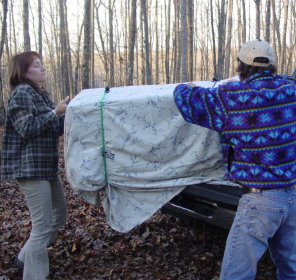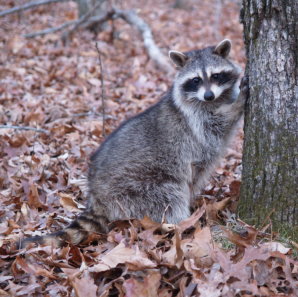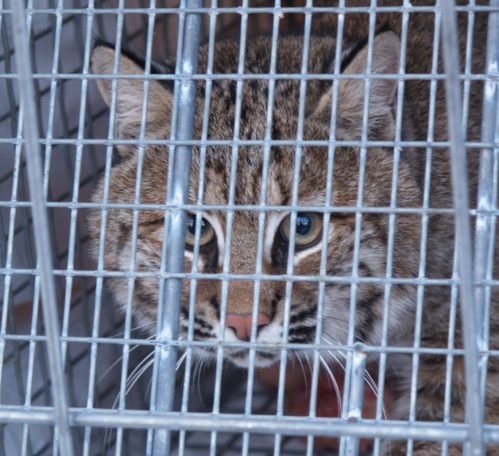Walden’s Puddle is a wildlife rehabilitation center located outside of Nashville, Tennessee. Every year they are called upon to rescue and care for over 1500 wild animals of all types. With ever increasing development in the south, that number grows every year.
The center is not a zoo. Whenever possible, animals are released back into the wild. However, Walden’s Puddle owns no land and has limited resources for insuring released animals have undisturbed habitat to establish a new home. This fall Swan Trust and Walden’s Puddle entered into a partnership with the release of two bobcats on Swan Trust land. The male and female bobcats both were recovered in Nashville when one wandered into a warehouse and the other had its den disturbed by bulldozers in a housing development. The staff at Walden’s Puddle capture the animals and treat any injuries the animal may have endured. Although the bobcats were both taken unharmed, they were kept for a short period of time to recover from shock and to test their ability to hunt rodents and small prey, insuring their survival upon release. Ideally, the animals are released before they have had the opportunity to acclimate to man’s presence.
The domain of a female bobcat is five acres, excluding the presence of other females from her territory. The male bobcat may have a range of as much as fifty miles, with numerous males sharing the same territory. Because bobcats are nocturnal, they are seldom seen. However, they continue to have a presence in the forests of Tennessee. The primary limiting factor is food, particularly access to small game. A healthy ecosysytem with plentiful ground rodents, squirrels, and small birds allows the species to maintain a sustainable population. Bobcats are important predators for keeping the ecosystem in balance.
As always, man remains the biggest threat to bobcat populations. During hunting season, Tennessee laws permit the killing of one bobcat per day. Loss of forest habitat to development poses a significant threat to bobcats and other predatory species.
 As we pulled into the woods in our truck with two bobcats in the back, taking a few hard bumps in the process, a low growl could be heard coming from under the covered cages. We gingerly lifted the cages out and carried them off the trail for a ways. Uncovering the door, my heart raced as I gazed upon this fierce woodland creature, the distinctive markings on its face glowing from out of the shadows.
As we pulled into the woods in our truck with two bobcats in the back, taking a few hard bumps in the process, a low growl could be heard coming from under the covered cages. We gingerly lifted the cages out and carried them off the trail for a ways. Uncovering the door, my heart raced as I gazed upon this fierce woodland creature, the distinctive markings on its face glowing from out of the shadows.
It was over so fast. The male darted out in a rapid blur and was gone, just like that, perfectly absorbed into the forest. The female came out more slowly, then ran about a hundred feet, and stopped. She looked back at us, then ran a short ways, and stopped again. We were all a little bit grateful for a final chance to observe this elusive creature before she disappeared into the forest.
The same day we went to a different part of the forest and released two raccoons. Their behavior was very similar to the bobcats. The male ran right out and scrabbled up a tree about 30 feet above us. The female had to be coaxed out and then wanted to inspect my wife, who was manning the video camera. Eventually, she found her tree. The Walden’s Puddle crew left some fruit and other treats around the base of the trees, to help the raccoons through the night, until they could find their way down to the stream.
Owls, hawks, foxes and many other animals make up the menagerie at Walden’s Puddle in any given year. We look forward to strengthening this partnership, providing a home for creatures caught in the complex web of change.




